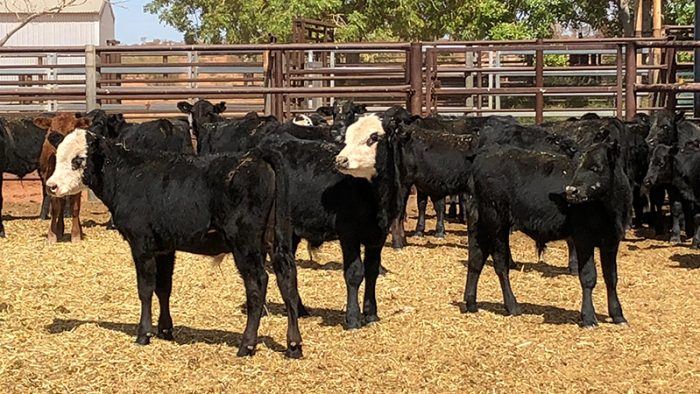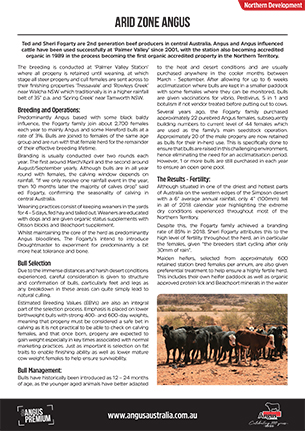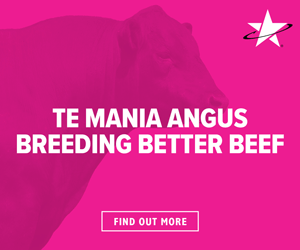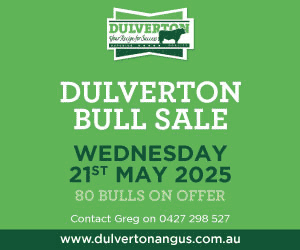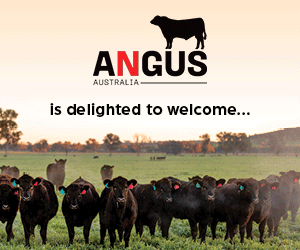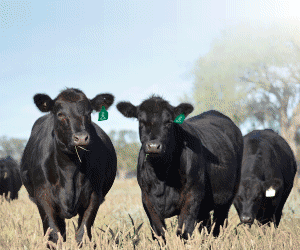Arid Zone Angus
Ted and Sheri Fogarty are 2nd generation beef producers in central Australia. Angus and Angus influenced cattle have been used successfully at ‘Palmer Valley’ since 2001, with the station also becoming accredited organic in 1989 in the process becoming the first organic accredited property in the Northern Territory.The breeding is conducted at ‘Palmer Valley Station’ where all progeny is retained until weaning, at which stage all steer progeny and cull females are sent across to their finishing properties ‘Tressavale’ and ‘Rowleys Creek’ near Walcha NSW which traditionally is in a higher rainfall belt of 35” p.a. and ‘Spring Creek’ near Tamworth NSW.
Breeding and Operations:
Predominantly Angus based with some black baldy influence, the Fogarty family join about 2,700 females each year to mainly Angus and some Hereford bulls at a rate of 3%. Bulls are joined to females of the same age group and are run with that female herd for the remainder of their effective breeding lifetime.
Branding is usually conducted over two rounds each year. The first around March/April and the second around August/September yearly. Although bulls are in all year round with females, the calving window depends on rainfall. “If we only receive one rainfall event in the year, then 10 months later the majority of calves drop” said Ted Fogarty, confirming the seasonality of calving in central Australia.
Weaning practices consist of keeping weaners in the yards for 4 – 5 days, fed hay and tailed out. Weaners are educated with dogs and are given organic status supplements with Olsson blocks and Beachport supplement.
Whilst maintaining the core of the herd as predominantly Angus bloodlines, The Fogarty’s intend to introduce Droughtmaster to experiment for predominantly a bit more heat tolerance and bone.
Bull Selection
Due to the immense distances and harsh desert conditions experienced, careful consideration is given to structure and confirmation of bulls, particularly feet and legs as any breakdown in these areas can quite simply lead to natural culling.
Estimated Breeding Values (EBVs) are also an integral part of the selection process. Emphasis is placed on lower birthweight bulls with strong 400- and 600-day weights, meaning that progeny must be considered a safe bet in calving as it is not practical to be able to check on calving females, and that once born, progeny are expected to gain weight especially in key times associated with normal marketing practices. Just as important is selection on fat traits to enable finishing ability as well as lower mature cow weight females to help ensure survivability.
Bull Management:
Bulls have historically been introduced as 12 – 24 months of age, as the younger aged animals have better adapted to the heat and desert conditions and are usually purchased anywhere in the cooler months between March – September. After allowing for up to 6 weeks acclimatization where bulls are kept in a smaller paddock with some females where they can be monitored, bulls are given vaccinations for vibrio, Pestivirus, 5 in 1 and botulism if not vendor treated before putting out to cows.
Several years ago, the Fogarty family purchased approximately 22 purebred Angus females, subsequently building numbers to current level of 44 females which are used as the family’s main seedstock operation. Approximately 20 of the male progeny are now retained as bulls for their in-herd use. This is specifically done to ensure that bulls are raised in this challenging environment, hence eliminating the need for an acclimatisation period. However, 1 or more bulls are still purchased in each year to ensure an open gene pool
The Results – Fertility:
Although situated in one of the driest and hottest parts of Australia on the western edges of the Simpson desert with a 6” average annual rainfall, only 4” (100mm) fell in all of 2018 calendar year highlighting the extreme dry conditions experienced throughout most of the Northern Territory.
Despite this, the Fogarty family achieved a branding rate of 85% in 2018. Sheri Fogarty attributes this to the high level of fertility throughout the herd, an in particular the females, given “the breeders start cycling after only 30mm of rain”.
Maiden heifers, selected from approximately 600 retained station bred females per annum, are also given preferential treatment to help ensure a highly fertile herd. This includes their own heifer paddock as well as organic approved protein lick and Beachport minerals in the water system. Breeders are culled at a maximum of 10 years of age in addition to dry females and non-black females.
The Results – Meeting Market Specs:
Predominantly using Angus, coupled with focusing on growth and fat traits have enabled the Fogarty family to produce high quality cattle suitable for export and the heavy domestic trade.
Steers are grown out on the NSW properties and are pasture finished on a mix of improved and native pastures, including; Rhodes grass, couch grass, kikuyu grass, fescues, bluegrass, wiregrass, phalaris as well as Red and white clovers and sub clovers. Cattle are rotationally grazed to minimize impact of overgrazing and managing pathogens.
The finished article is then to processors, dressing out at between 250-300kg HSCW or approximately 57% dressing percentage.
Angus Australia acknowledges the funds provided by the Australian Government through the Meat & Livestock Australia Donor Company (MDC).
This resource was created as a result of a collaboration between Angus Australia and Meat & Livestock Australia Donor Company (MDC) (Project P.PSH.1063).

